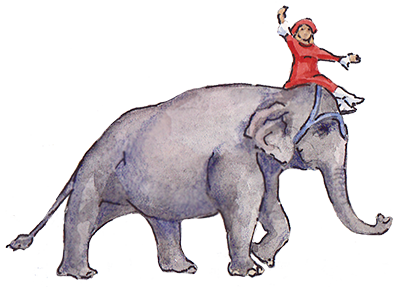

A circus without elephants would be like Hamlet without [Hamlet]. |
|||||||||||||||||||
|
|||||||||||||||||||
There is a great deal of fascinating lore about circus elephants. |
|||||||||||||||||||
| Circus, n. A place where horses, ponies and elephants are permitted to see men, women and children acting the fool. ― Ambrose Bierce |
|||||||||||||||||||
Circus elephants had a baseball league, and were costumed by famous Broadway designers. They enjoyed hard drink. The lemonade story in Water for Elephants is based on an actual incident, as is the mistake about an elephant's intelligence based on her inability to follow English prompts when trained in another language. |
|||||||||||||||||||
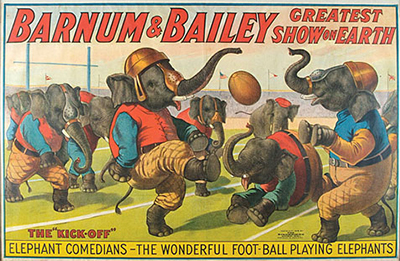 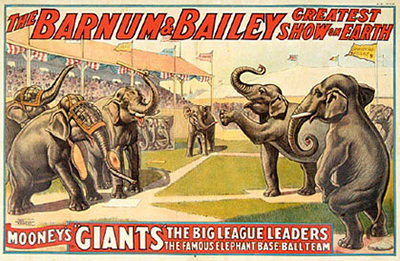 |
|||||||||||||||||||
Elephants were (and are) beloved. Clearly, there were many cases where elephants had close bonds with their trainers and others traveling with them all season. |
|||||||||||||||||||
.jpg) 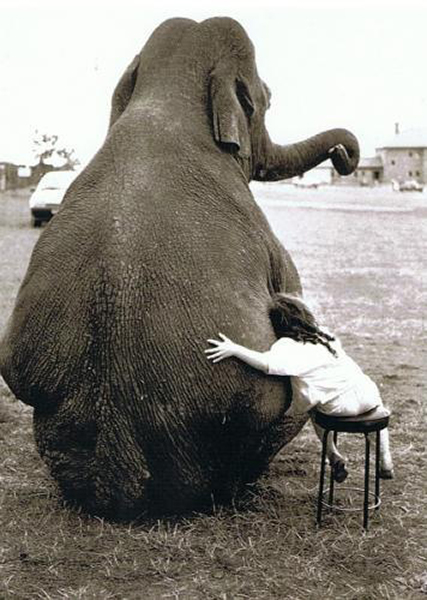 |
|||||||||||||||||||
But elephants are dangerous. Bulls have testosterone cycles that have led to their killing trainers, other animals, and bystanders. Most circus elephants were females, but elephants are so large that females are dangerous, too, even when well trained. |
|||||||||||||||||||
And undoubtedly some elephants have been badly abused. |
|||||||||||||||||||
| I hate to witness animals in captivity—or see circus elephants paraded down the streets. When animals are caged, it's a loss of what they are. —K.A. Applegate |
|||||||||||||||||||
Elephants are herd animals: large herds are natural, living without other elephants is stressful. Small circuses could not afford more than one. The unnatural poses circus elephants routinely performed were bad for them. Elephants born in captivity were thought to require less "breaking" than those born in the wild, and circuses have had good success with captive breeding. But there was uneven treatment depending on who was doing the training. Certainly, elephants have been brutalized in circuses. And the public has been made aware that this happened. Elephant acts became a public relations problem for RIngling. Besides, traveling with elephants became increasingly expensive. Ringling announced elephants would be out of the circus by 2018, but 2016 was their last year. |
|||||||||||||||||||
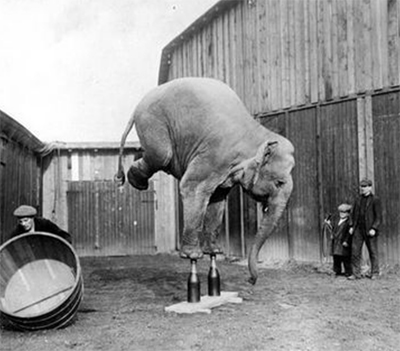 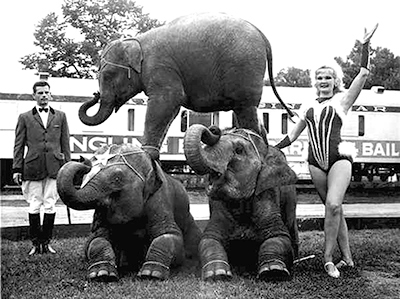 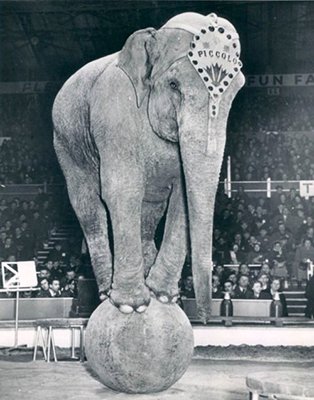 |
|||||||||||||||||||
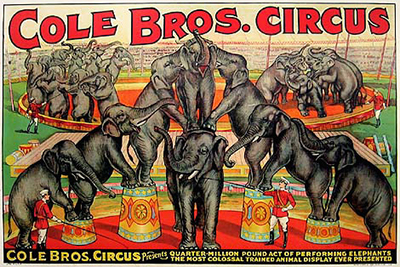 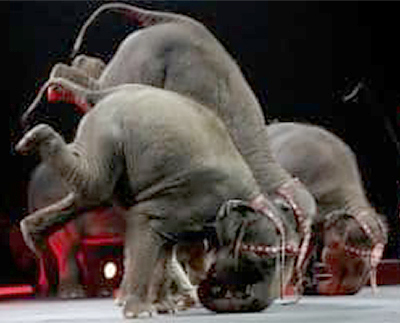 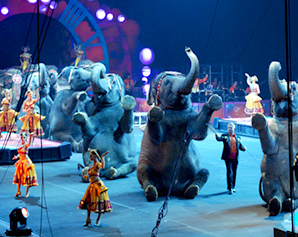 |
|||||||||||||||||||
Something's gained, but something's lost.
|
|||||||||||||||||||
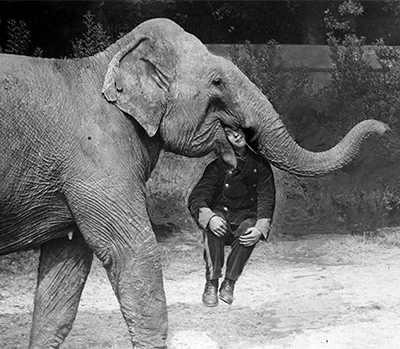 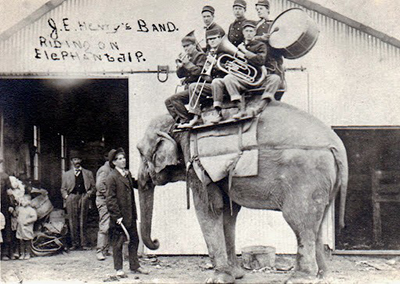 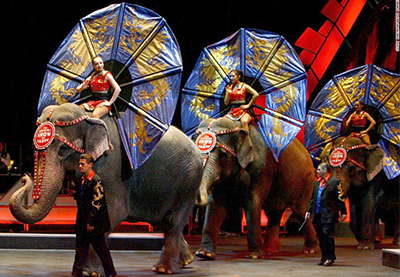 |
|||||||||||||||||||
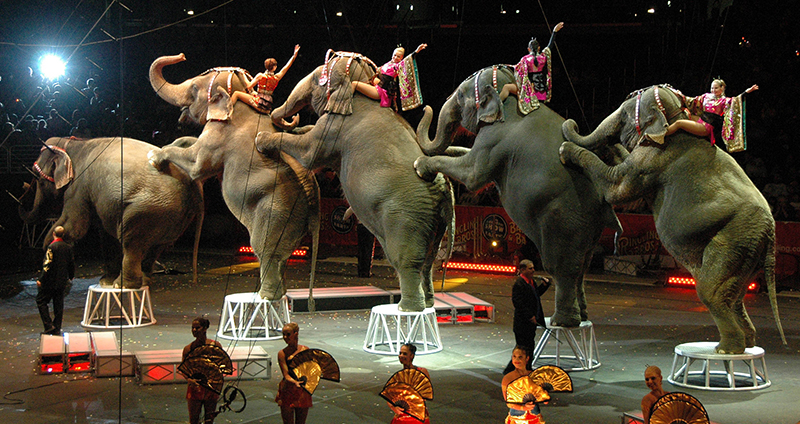 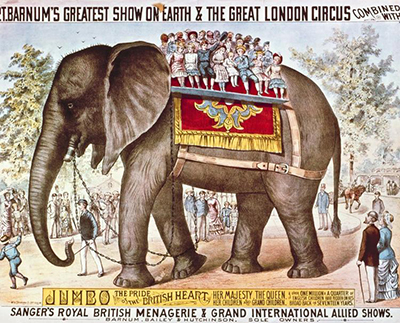 |
|||||||||||||||||||
|
|||||||||||||||||||
|
|||||||||||||||||||
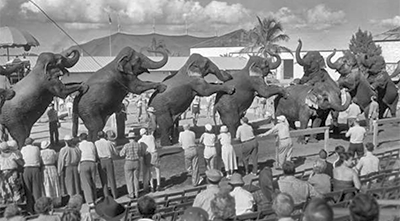 When circuses started to travel by train, it was much easier to include elephants. They were stars: they led parades and were featured in the spec and in the rings.
When circuses started to travel by train, it was much easier to include elephants. They were stars: they led parades and were featured in the spec and in the rings.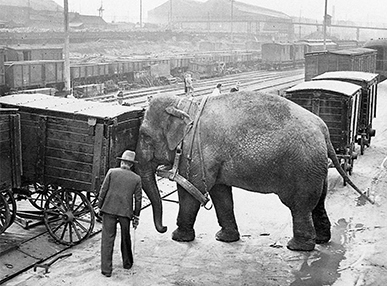 Besides, they were a great help in setting up and loading.
Besides, they were a great help in setting up and loading.